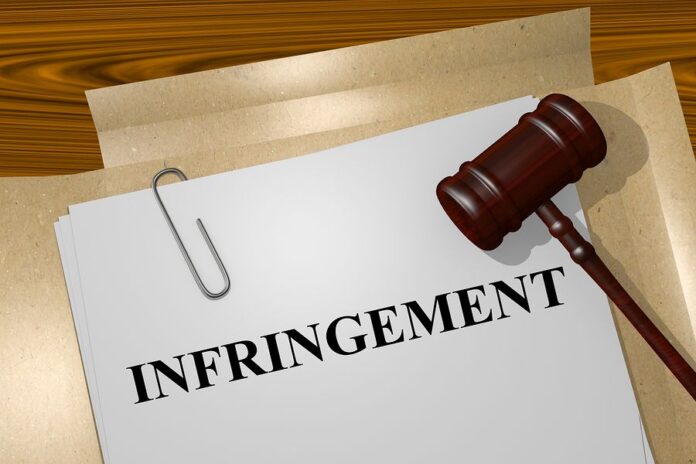In the ever-evolving landscape of innovation, inventors and entrepreneurs embark on a relentless quest to transform their visionary concepts into tangible realities. Yet, within this challenging journey lies a looming specter – the risk of idea theft and fierce competition.
To shield their intellectual property from encroachment, innovators often turn to patents, a formidable legal instrument.
In this comprehensive exploration, we delve into the intricacies of patents, encompassing their various types, the labyrinthine patenting process, stringent eligibility criteria, the pivotal role of patent offices, the scope and duration of patent rights, the mechanisms for enforcing these rights, the manifold benefits of patenting, the associated costs and challenges, the imperative of international patent protection, and viable alternatives to patents.
Introduction to Patents

At its core, a patent represents a legal pact between an inventor and the government. This pact grants the inventor exclusive rights to their creation for a finite period. These rights encompass the sole authority to manufacture, use, sell, and license the patented invention.
Patents stand as a cornerstone of innovation, serving as a potent incentive for inventors to invest their resources, time, and creativity in the development of novel technologies, products, and processes. The prospect of reaping the rewards of their ingenuity fuels further innovation, propelling society forward and if you’re looking in this direction look here for additional info.
Types of Patents
Within the realm of patents, three primary categories exist, each tailored to distinct facets of innovation. Utility patents, the most common type, span a broad spectrum, covering processes, machines, articles of manufacture, and compositions of matter.
On the other hand, design patents pivot towards safeguarding the aesthetic and ornamental aspects of inventions. These patents prove indispensable for innovators whose creations rely heavily on unique visual appeal.
The Patenting Process

The arduous journey towards securing a patent commences with the meticulous process of invention disclosure. Inventors must comprehensively document their creation, detailing its inner workings through descriptions and illustrations.
A pivotal step follows in the form of a patent search, a meticulous quest to ensure the invention’s novelty and confirm its departure from the confines of existing patents and this is where InventHelp can be of help.
With a documented and thoroughly researched invention in hand, inventors proceed to prepare and file a patent application. This meticulous dossier eloquently narrates the invention’s essence and is submitted to the relevant patent office.
Herein initiates the formal patenting process, subjecting the application to scrutiny by skilled patent examiners. This assessment revolves around evaluating the invention’s novelty and utility, ensuring alignment with legal prerequisites.
Eligibility for Patents
The eligibility of an invention for patent protection hinges on specific and stringent criteria. Firstly, an invention must exhibit unequivocal novelty, with no prior disclosure or patent that resembles it.
Furthermore, it must possess practical utility, demonstrating a discernible and tangible application or use. Lastly, the invention must transcend the realm of obviousness, showcasing a level of ingenuity that eclipses incremental improvements upon existing technology.
The Role of Patent Offices

The existence and efficacy of patents hinge on the presence of patent offices, government entities tasked with overseeing the patenting process. These offices play a pivotal role by not only granting patents but also providing a robust legal framework for enforcing patent rights.
Among them, the United States Patent and Trademark Office (USPTO) stands as a prominent institution, responsible for granting and upholding patents within the United States.
Patent Rights and Duration
Once granted, a patent confers upon its holder a unique set of exclusive rights. These encompass the sole authority to make, use, sell, and license the patented invention. The duration of this protection varies by the type of patent.
Utility patents, the most prevalent, typically offer protection for a span of about 20 years from the filing date. Design patents extend this protection for a duration of 15 years from the grant date, while plant patents align with utility patents, offering 20 years of safeguarding.
Infringement and Enforcement

In the intricate world of patents, the specter of infringement looms large. Patent infringement occurs when an entity or individual, without the requisite permission, engages in activities that involve the patented invention. Infringement represents a violation of the patent holder’s exclusive rights and entails serious legal consequences.
Patent holders possess the right to enforce their exclusive rights through legal action. This process often involves filing a lawsuit against the infringing party, seeking remedies that may include damages awarded to the patent holder.
Enforcement stands as a critical aspect of patent protection, serving as a deterrent against potential infringers and a safeguard for the patent holder’s intellectual property.
Benefits of Patenting
Patenting offers an array of compelling advantages, propelling it to the forefront of intellectual property protection. Chief among these advantages is the establishment of a temporary monopoly, wherein the patent holder gains exclusive control over the invention’s use.
This exclusivity can be leveraged to extract value through licensing agreements, generating revenue and bolstering market position.
Costs and Challenges

The pursuit of patents, however, is not without its challenges and associated costs. These costs encompass filing fees, attorney fees, maintenance fees to retain the patent’s vitality, and potential litigation expenses in cases of infringement disputes.
Navigating the patenting process itself can prove challenging due to its inherent complexity and the risk of rejections or disputes.
International Patenting
In our interconnected world, the notion of protecting inventions beyond national borders has become an imperative. International patent protection offers inventors the means to safeguard their creations in multiple countries simultaneously.
At the forefront of this international endeavor stands the Patent Cooperation Treaty (PCT), a pivotal international treaty that simplifies the process of seeking patent protection in multiple countries.
The PCT streamlines the initial filing process, offering inventors a standardized platform to initiate their patent applications. Furthermore, it provides a longer period during which inventors can decide in which specific countries to seek patent protection.
This harmonization of international patenting procedures serves as a testament to the global nature of innovation and the need for comprehensive intellectual property protection on a global scale.
Alternatives to Patenting

While patents represent a formidable mode of intellectual property protection, they may not always be the most suitable choice. Inventors may find themselves considering alternative mechanisms, tailored to their unique circumstances and the nature of their inventions. Two prominent alternatives to patents are trade secrets and copyrights.
- Trade Secrets: Trade secrets involve keeping certain aspects of an invention confidential rather than disclosing them in a patent application. This approach is particularly apt for inventions where secrecy is paramount and where patents may not provide adequate protection.
- Copyrights: Copyrights, on the other hand, protect creative works such as software, literature, and artistic creations. While copyrights primarily safeguard the expression of ideas rather than the ideas themselves, they can be a valuable tool for creators in certain domains.
Conclusion: The Decision to Patent
In the grand tapestry of innovation and invention, the decision to patent or explore alternative forms of protection is a pivotal one. It transcends the boundaries of creativity and commerce, intertwining legal and strategic considerations.
This decision should be informed by a meticulous evaluation of the nature of the invention, the competitive landscape, the associated costs, and the desired duration of protection.





![Calgary’s Hottest Neighborhoods for Luxury Homebuyers [2024]](https://thewashingtonote.com/wp-content/uploads/2024/04/Calgary-324x160.png)



